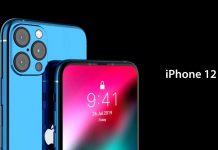Motorola launched the first mobile phone in the world – the Motorola 8000x – back in 1983. It was something of a luxury item, with an eye-watering $3,995 price.
The highly promising MicroTAC from Motorola came onto the market in 1989 and was the first cell phone that appeared less like a brick, and more like a sleek mobile phone, with the StarTac gaining the distinction of the “world's smallest” phone in 1996.
While the rest of the world switched to GSM in the late nineties, Motorola needed something exceptional to bring the American giant back in the spotlight. It's most popular handset by far was the Motorola Razr V3.

Motorola Razr V3
The Motorola Razr was part of the 4LTR line, a series of Motorola's mobile phones. The V3 was the first phone announced in the series and was unveiled in July 2004 and launched in the third quarter of 2004.
Shortly thereafter, the upgraded V3i adopted the V3 model, including a partnership with Apple Inc. to integrate iTunes into it. It was initially advertised as an exclusive fashion handset, due to its distinctive appearance and thin profile.
In under a year, it's price was dropped, and by July 2006, it sold more than 50 million units. The V3 model sold more than 130 million units during the four-year run of the Razr, and it made it the globe's best-selling flip phone at the time.
Motorola Razr V3’s Popularity
Sales of Motorola's mobile phone division were stagnant and losing money leading up to its sale. The Razr's success made the division profitable again. Motorola had not carried out such trend-setting phone design, since the aforementioned StarTac.
The phone was famously hard to get hold of, drawing long queues, selling out quickly, and triggering a tidal wave of knockoffs that jumped on the bandwagon.
Motorola followed it up after the Razr V3 shot to stardom by painting it in every conceivable color, and introducing a range of updated versions with additional features and modifications.
Specifications
Crafted from magnesium and aluminum, the Razr V3 weighed in at a feather-light 95g and only measured 98 x 53 x 13.99 mm. It was one of the thinnest and the slimmest phones of its time, which ignited the razor edge-inspired moniker.
Although it's not the first phone to have dual displays (the Samsung A300 earned that achievement), the outside display of 96 x 80-pixels and a 2.2-inch 176 x 220 LCD screen on the inside were both color.
The backlit keypad, d-pad, and six other buttons were shaped from an aluminum sheet and almost entirely flat, which was unexpectedly responsive regardless of the lack of definition. It was extremely common among those fond of typing with the tips of their exceptionally long fingernails.
Other Features

Other features included a VGA camera, video recording, MP4 video playback, and MP3 ringtone compatibility (although there was only a meager 5 MB memory).
It also has a 680mAh battery, which provided about 250 hours of standby and speaking time of nearly seven hours. This wasn't anything fantastic by modern standards, but it was considered very remarkable for such a svelte handset at the time.
The top right edge was house to the volume key, and below that was a designated “smart key”, which enabled a number of clamshell-closed functions. On the opposite edge is the “voice dial” key, which now provided some of the hands-free calling capabilities that you might get from Siri or Google Now.
Other functionality featured Bluetooth, IMAP, and WAP 2.0 internet browsing, and also the typical set of games and a contact organizer with 1000-entry capacity.
Bottom Line
After 16 years, the Razr is back and is looking just as difficult to get as the V3. The new Razr does have one essential factor that no other flip phone (like the Samsung Galaxy Z Flip) can match: nostalgia.







